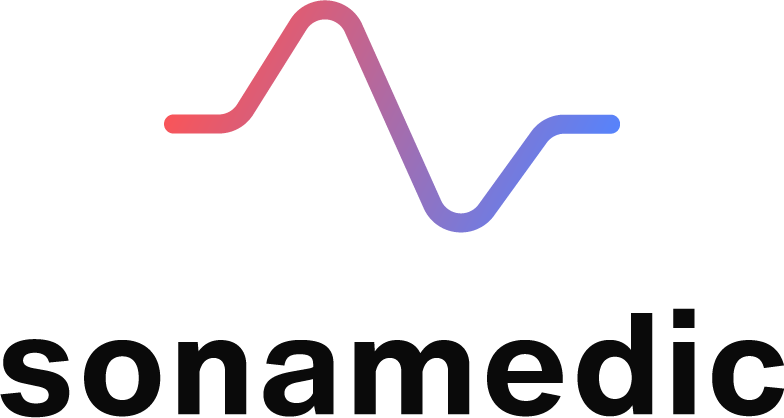How binaural beats can help with relaxation and stress reduction
Binaural beats are a gentle method with which you can relax, reduce stress, alleviate anxiety and thus have a positive effect on your sense of health. Binaural beats unfold their effect via brain wave synchronisation, which means that the electrical activity of the brain is oriented on the frequencies played. For example, brain activity can be stimulated which occurs during relaxation phases, which helps us to find peace and quiet more easily. This article will present some scientific studies that have looked at binaural stimulation in the context of relaxation and mindfulness.
Binaural beats can be classified into the following frequency ranges. However, the exact delineation of the ranges may vary slightly from source to source:
Delta frequency range: 0.1 – 3.9 Hertz
Theta frequency range: 4.0 – 7.9 Hertz
Alpha frequency range: 8.0 – 12.9 Hertz
Beta frequency range: 13 – 37.9 Hertz
Gamma frequency range: 38 – 50 Hertz
Successful meditation with binaural beats

Study 1: The relationship between EEG und binaural beat stimulation in meditation
Study summary
In this study, the researchers investigated the effects of meditation and meditation combined with binaural beats on brain activity. They studied binaural beats of the frequencies 5 Hz, 8 Hz, 12 Hz and 18 Hz. The effect of binaural beat stimulation was assessed in two different study conditions, in one experiment the stimulation was provided by binaural beats only, in the other the binaural beats were combined with music. Brain activity was recorded using an electroencephalogram (EEG). For this purpose, sensors are placed on the patient’s scalp. The human brain has millions of neurons, which create electrical signals on the surface of the head, which can be recorded by an EEG. The brain shows different electrical activity depending on the state of mind it is in.
The EEG measurements showed a clear change in brain activity due to meditation. By combining binaural beats and music these effects could be increased even more. When stimulating with binaural beats without music, significantly lower effects were seen in the electroencephalogram than when combined with background music.

Structure and procedure of the study
Five healthy patients aged between 23 and 25 years participated in this study. A total of three experiments were carried out. In the experiment, the electrical activity of the brain was measured using an electroencephalogram. In the first experiment, the subjects meditated without further stimulation for 10 minutes each with eyes closed and open. In the second experiment the subjects were only acoustically stimulated with binaural beats of the frequencies 5 Hz, 8 Hz, 12 Hz and 18 Hz. Each of the sequences was played for three minutes, with the frequencies changing slowly from 5 Hz to 18 Hz. This experiment lasted a total of 21 minutes and included both closed and open eye meditation. In the third experiment the subjects were exposed to the same sounds, but each beat frequency was accompanied by music based on natural sounds.
Result and conclusion
The results show that binaural beats in combination with music tend to enhance the effect of the stimulation. For the experiment, in which only binaural beats were played, the stimulation caused a significantly lower effect in the EEG. However, the scientists point out that effects might occur if the subjects used the binaural beats more often. It was also observed that the effect of binaural stimulation with music correlated significantly with the absolute electrical activity on the electroencephalogram. The effect of stimulation by binaural beats was observed particularly in theta and lower alpha frequencies on the front midline of the brain. At this point it should be noted that the small number of test persons makes it difficult to make generally valid statements based on this study and the results can only be evaluated in terms of their tendency.
More relaxation through binaural beats

Study 2: Binaural beat effect on brainwaves based on EEG
Study summary
This study examined the effects of binaural stimulation in the delta and theta wave range. A total of 33 subjects took part. In the study, the electrical activity in the brain was examined with the help of the electroencephalogram (EEG), which was measured before and after the stimulation by binaural beats. The results showed a significant increase in theta waves in the brain during the binaural stimulation phase, which are associated with deep relaxation, daydreaming and memory performance. A slight increase in delta activity was also measured, although it was not significant in the present experiment. Delta waves occur particularly during deep sleep. Overall, the results of the study showed that binaural beats produce delta and theta brain waves that can be associated with the relaxation response.
Structure and procedure of the study
33 subjects first completed a Depression Anxiety Stress Questionnaire (DASS) to assess their stress levels. The subjects were then asked to sit down comfortably in a room with dim lighting. They kept their eyes closed for the entire duration of the intervention. They were encouraged to wear eye masks to avoid stress resulting from the use of their eye muscles.
The subjects were divided into two groups for evaluation: “stressed” and “normal”. Membership of each group was determined using the DASS questionnaire. More than 50 percent of the test persons ended up in the “Stress” group, which could be related to the fact that the participants were students and the study was conducted shortly after the exam phase.
Result and conclusion
The EEG results show a slight increase in both delta and theta activity. Of 33 subjects, 20 showed an increase in delta brainwaves and 13 a decrease. The scientists attribute this to the fact that some participants were unable to relax properly in the situation because they were exposed to binaural beats for the first time. Another limitation might be that people need to be awake to be stimulated with binaural beats, but delta waves mainly occur during sleep.
In addition, out of 33 subjects, an increase in theta activity was observed in 25, while no such increase was observed in 8 subjects. As some of the participants were unable to relax, they were unable to daydream and did not reach the deep relaxation or daydream phase, so their theta activity decreased. Subjects often have to be exposed to binaural beats several times in order to achieve an optimal relaxation effect.
Despite these limitations, the overall results show a significant increase in theta activity from binaural stimulation. However, the researchers point out that more trials with a larger number of people would be desirable to get more meaningful results.

Study 3: The Effect of Binaural Beat Technology on the Cardiovascular Stress Response in Military Service Members With Postdeployment Stress.
Study summary
In this study, 74 military members who complained of continued stress after a foreign deployment were divided into two groups. One group was acoustically stimulated only by music, the other group had additional binaural beats embedded in the music. The test persons used their audio programmes for four weeks in three consecutive nights for at least 30 minutes each. The results were measured with a heart rate variability stress test (HRV) before and after the intervention and were also recorded subjectively via a stress diary. Patients in the group with music and embedded binaural beats showed a reduced sympathetic response, indicating more relaxation. The sympathetic nervous system is the part of the nervous system that becomes active to respond to increased demands such as stress or danger. At the same time, parasympathetic activity, the part of the nervous system that is present in moments of relaxation, increased again. The control group showed an opposite effect. The subjects in the experimental group also recorded less stress in their diaries than the control group.
Structure and procedure of the study
Cardiovascular disease is the leading cause of death in the United States. Military personnel in particular show an increased susceptibility to these forms of disease compared to the civilian population. The cardiovascular system is negatively affected by anxiety and stress. Chronic stress creates an automatic imbalance with excessive sympathetic activity, which changes blood pressure and heart rate. The aim of the study was to test in military personnel the efficiency of music with embedded binaural beats in the theta frequency range (4-7 Hz) on the cardiovascular response during repeated stress stimulation.
The study involved 74 military personnel who continued to show symptoms of stress even after their deployment. The subjects had to be at least 18 years old and have been in service for the last 10 years. The participants in the study first filled out a questionnaire with information about their personality. They were then asked to complete a hand-eye coordination task for five minutes while simultaneously connected to an HRV monitor. The Game “Mattle game Operation” was used as a coordination task. In the long-term phase of the experiment, the subjects were to listen to their audio programme with binaural beats on an MP3 player before going to bed for four weeks, three times a week for at least 30 minutes. After waking up, the subjects wrote a stress diary by answering the questions: “Did you feel stressed at work yesterday?” and “Did you feel stressed at home yesterday?”. At the end of the intervention phase, the participants were again subjected to the eye-hand coordination test, in which their cardiovascular response, i.e. the changes in heart rate (HRV), was measured.

Result and conclusion
There were significant differences in HRV measurement between the control group and the group with binaural beats. The experimental group showed a decrease of – 2.5 ms2/Hz in the LF HRV measurement (low frequency heart rate variability), the control group an increase of 7.99 ms2/Hz.
Differences were also found in the HF-HRV measurement (measures respiratory sinus arrhythmia, i.e. breath-synchronous fluctuations in heart rate), which showed an increase of +2.5 ms2/Hz in the binaural beat group, while a decrease of -7.64 ms2/Hz was seen in the control group. These results suggest that the participants in the experimental group showed clear signs of relaxation following the four-week stimulation with binaural beats, while the tension in the subjects in the control group even increased.
The respondents’ subjective assessment in their diaries of whether they were feeling stressed at work or at home showed that the binaural beat group felt less burdened by stress than the comparison group.
The study suggests that music with embedded binaural beats of the theta frequency has a positive effect on the cardio-vascular stress response in military personnel. The subjects noted a high degree of perceived relaxation. In addition, self-perceived relaxation correlated with an increase in parasympathetic activity and a decrease in sympathetic activity when using binaural beats. The study shows that military personnel can use binaural beats to reduce the stress they feel after deployment. Persistent stress can lead to post-traumatic stress disorder, anxiety, eating disorders, sleep disorders and drug abuse in the long term. If stress is treated early and non-invasively, these secondary diseases can be reduced.
It is interesting to note that the control group of the study not only showed a significant difference to the binaural beat group, but that even a completely opposite effect was observed, i.e. a stepwise increase in their stress load over the test period. According to the researchers, these findings are worrying because they show that continued stress without intervention increases and poses a significant threat to the health of soldiers in today’s world.
To support the finding that the stress symptoms really did increase in the control group, the HVR (total power) was measured again. The total power reflects all autonomic activity, with sympathetic activity accounting for a large proportion. In healthy adults this activity should be at least 1,000 ms2/Hz. In chronic stress the total power decreases due to reduced regulatory functions. In this study, subjects in the BB group showed a sustained score of 1.200 ms2/Hz, while the control group showed a significant decrease from 1.113.64 to 985.26 ms2/Hz. This indicates signs of chronic stress in the control group.
The scientists point out that more studies are needed to scientifically cover the long-term effect of binaural beats. They also conclude that, based on the results, binaural beats are an easy-to-use and cost-effective alternative to other stress-relieving relaxation techniques.




